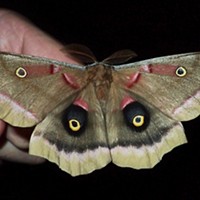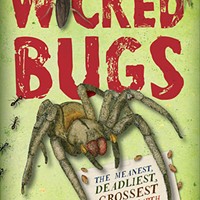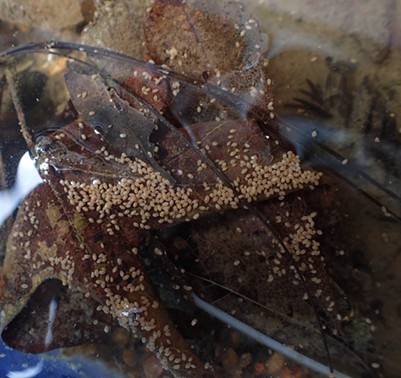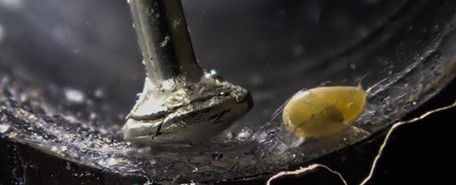Sunday, May 24, 2015
HumBug: The 40-year-old Mystery
Posted By Anthony Westkamper on Sun, May 24, 2015 at 3:24 PM
When I was in the Navy I never minded midnight topside watch on the ship I was on in Long Beach. I've always loved glow-in-the-dark things, and I never tired of looking into the faintly luminous blue fire swirling in the warm bay waters. That was before the Internet and Wikipedia, so my options to look things up were limited. Still, I found out that the glow was caused by phytoplankton, a pretty common phenomenon. Unexplained were the brilliant blue pinpricks moving around not by the eddies of water flow, but seemingly of their own volition. Those, I thought, might be predators in the faintly glowing soup.
Skip forward to today. In a blue Pyrex baking dish used as a saucer for some water-loving plants, there are hundreds of tiny, ivory colored animals, each smaller than the head of a pin, moving capriciously, like those glowing blue beasties from long ago. These, however, do not glow but their size and movement is similar. I had no idea what they might be so I caught a few and took a look with my microscope. From between two tiny, clam-like shells, a set of filament legs snap in and out, propelling them along crazy pathways in the water.
I have no idea how they got there. I knew they were not insects or spiders or any of the other arthropods I know. I took a few photos and posted them online on an entomological site. Soon enough, someone replied that they might be ostracods, aka Seed Shrimp. A quick trip to Wikipedia set me straight. They were indeed ostracods, a creature notable as the single most common animals in the fossil record. It seems their tiny shells are numerous and easily preserved.
Their eggs must be microscopic, and some may have actually been desiccated and windblown into my yard.
Although the freshwater species do not glow, it seems there are marine ones that do. The description of the bright electric blue and the crazy patterns the ones in my backyard take in the water lead me to believe the ones I watched so long ago were of the same family. Just to see what would happen, I started another culture which seems to thrive in water with a few decaying leaves. I noticed, too, that in water where they thrive there are no mosquito larvae. It might be coincidence, the little crustaceans may eat the mosquito eggs or their requirements may be different.
Oh, by the way, these guys really are smaller than the head of a pin. The pin in this case has a head diameter of 1.7 millimeters and shaft of .6 millimeters, just to give an idea of the scale.
Speaking of Bugs, insects
-

HumBug: The Current Mass Extinction
Jan 19, 2020 -

Humbug: That's One Big Moth
Jul 8, 2018 -

Wicked Bugs: The Meanest, Deadliest, Grossest Bugs on Earth
Aug 3, 2017 - More »
Readers also liked…
more from the author
-
HumBug: Early Spring Pollinators
- Apr 12, 2020
-
HumBug: A Recipe for History
- Apr 5, 2020
-
HumBug: Bugs in the City
- Mar 29, 2020
- More »


































